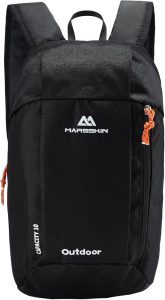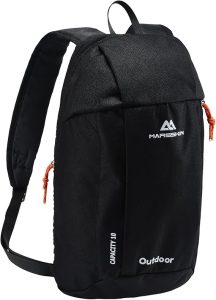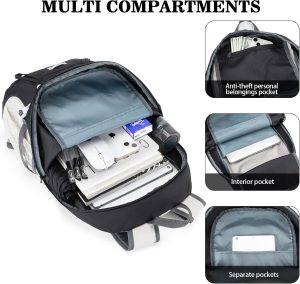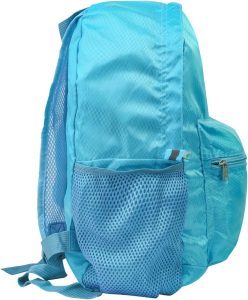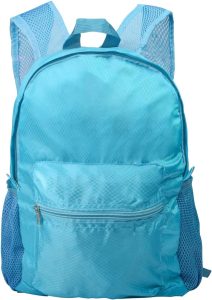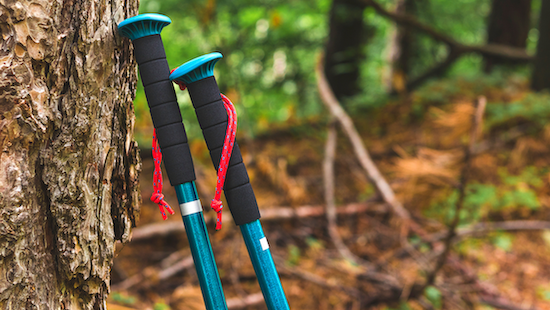We often list ‘Trekking Poles’ on our Packed 4 Adventure gear lists, and just as often get asked the question- ‘Do I really NEED trekking poles?’ In an effort to address this age-old question, I figured I’d write a quick blog about it. Honestly- who DOESN’T want to read a blog about trekking poles?!? (Hands DOWN, team…😆)

Speaking of honesty (and a convenient segue)-
I’ll be honest, my first run-in with trekking poles was not a positive one. I was hiking the Inca Trail, hustling to see sunrise over Machu Picchu when I came up behind a group of hikers. ‘Clickety-clack. Clickety-clack.’ They were moving slow, the trail was narrow, and I couldn’t pass due to their poles. I was young, brash back then- which meant I was also annoyed and impatient, frustration growing with every stride. Thankfully they stopped to rest, allowing me to hurry past (and catch that sunrise).
‘Trekking poles. Pfffft.’ I vowed I would never use them.
Fast-forward several hiking trips (and two creaky knees) later- my Swiss friend Sebastian and I were on a road trip through the Southwest when he convinced me to use trekking poles on a hike through the Grand Canyon. ‘They’ll save your knees, bro…’. Fair enough. I need my knees.
I tried them. I loved them. More importantly, my knees loved them, and my affinity for trekking poles continues to this day. (The fact that we hiked out of the Grand Canyon in a blizzard that day miiiiight have played a role as well…’

The question remains- when SHOULD one use trekking poles?
Uneven terrain, slick conditions, long descents, extended climbs- these are all places where trekking poles come in handy. If you’re carrying a backpack, trekking poles can help you balance the load. They’re invaluable for stream crossings and navigating icy trails.
The real clincher is their usefulness over long distances- even the slightest easing of ligament irritation and repetitive impacts over long distances can make (or break) a hike… As far as our trips are concerned, think the Tour du Mont Blanc, our Grand Canyon trips, the hikes we do in Patagonia and Alaska… Using trekking poles makes all of these hikes that little bit easier, which in turn makes them that little bit more enjoyable.
What differentiates one pole from another?
Grips: There are three types of grips- rubber, cork, and foam. Rubber tends to be the cheapest, cork somewhere in the middle, and foam is typical of higher-end poles. Rubber is sturdy and shock-absorbing, but can chafe and cause blisters on sweaty hikes. Cork is softer, though it will break down over time. Foam has a comfortable feel, absorbs sweat and has a longer lifetime.
Pole material: Shafts are typically aluminum or carbon/composite- aluminum is heavier yet more durable (will bend under stress), while carbon/composite is lighter but more likely to shatter. Carbon poles are typically more expensive due to their lighter weight.
Adjustable vs. Fixed-Length: You’ll want your arm at a 90-degree angle, so look for a pole that ‘fits’ your height. An advantage to adjustable poles is the ability to lengthen them on downhill sections and shorten them on climbs, maximizing their utility. The downside is the locking mechanisms can loosen over time, resulting in adjustments/failure along the trail. Fixed-length poles often have longer grips, providing similar utility without having to adjust the pole/deal with slippage.
‘Packability’: TSA regulations require poles be placed in checked baggage- if you plan on frequent travel with your poles, collapsible poles are a good option.

Pro tips:
Lengthen (by about 5cm) on descents to help absorb shock to your knees; shorten by 5cm on climbs to use the pole as uphill propulsion.
When employing the straps, run your hand up through the loop, then grip down, using your palm along your thumb to secure the strap against the pole.
If the trail is soft, consider using tip covers to keep tips from getting stuck in the mud. Rubber covers also provide superior traction on rock(y) trails. (They also protect your luggage.)
For photographers, poles can replace a tripod. Some poles have camera adapters on the tops.
When needed, poles are ideal for backcountry splints.
What pole should you use?
Any pole is better than no pole. Functionally speaking, they all do the exact same thing. Sure, you can spend hundreds on top-of-the-line poles, but unless you’re an elite mountaineer or an ‘every-ounce-counts’ flashpacker, a pole is a pole. Find a pole that fits your budget (and fits in your luggage) and you’ll be set for whatever the trail might throw your way.
Oh yeah- and as far as ‘trekking poles’ vs. ‘hiking sticks’- there’s really no difference. They’re the same thing. (Unless you’re talking about that ‘hiking stick’ you found in the woods. Sorry- that’s just a stick.)
Now c’mon- grab your trekking poles (or your hiking sticks) and LET’S GO SOMEWHERE!!!
uis enim.

